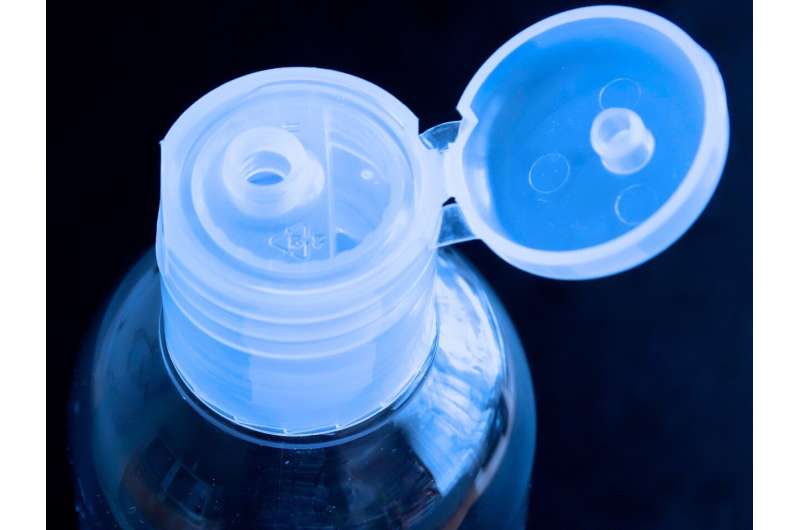Credit: CC0 Public Domain
Opening plastic packaging, such as plastic bags and bottles may contribute to the generation of small amounts of microplastics—small plastic particles less than 5 mm long—during daily tasks, according to a study published in Scientific Reports.
Microplastics are generally believed to originate directly from industry, for example as cosmetic exfoliates, or indirectly from the breakdown of larger plastic items over time. However, the contribution of daily tasks such as cutting, tearing or twisting open plastic packaging and containers has not been fully understood.
Cheng Fang and colleagues monitored the generation of microplastics during the tearing open of chocolate packaging, cutting of sealing tapes and opening of plastic bottle caps. The generation of microplastics during these processes was confirmed using chemical tests and microscopy.
The authors found that different shapes and sizes of microplastics were generated during tearing or cutting. These included fibers, fragments or triangles, ranging from nanometers to millimeters in size. Fragments and fibers were generated most often. The authors estimated that ten to 30 nanograms (0.00001-0.00003 milligrams) of microplastics may be generated per 300 centimetres of plastic during cutting or twisting, depending on the opening approach and conditions of the plastic, such as stiffness, thickness or density.
The results suggest that everyday activities such as opening plastic bags and bottles could be additional sources of small quantities of microplastics; however, their risk, possible toxicity and how they may be ingested are not yet resolved and further research into human exposure is needed.
More information: Microplastics generated when opening plastic packaging, Scientific Reports (2020). DOI: 10.1038/s41598-020-61146-4 , nature.com/articles/s41598-020-61146-4
Journal information: Scientific Reports
Provided by Nature Publishing Group
























